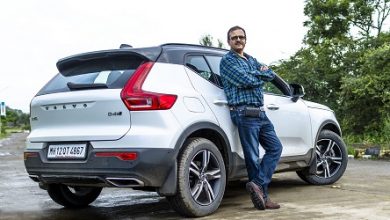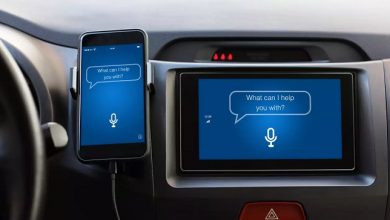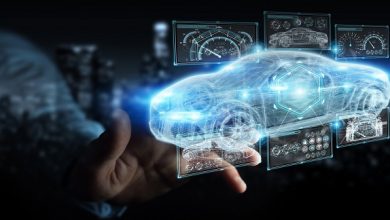Suhas M Gowda shares his views about connected vehicle ecosystem in India

The connected vehicle ecosystem in India is evolving, with telecom operators, automakers, Tier 1s and technology companies investing in it. To understand better, we reached out to industry thought leaders seeking their views about connected vehicle ecosystem in India and emerging automotive technologies. Below are views shared on some of the points.
Connected Vehicle Ecosystem in India
India, under the aegis of Digital India is also seeing a major transformation towards a highly connected mobility eco-system. The entire global and Indian mobility industry is at a turning point, so are we at ETAS.
Most of the 2/3 W, passenger car and CV automotive offerings in India are now seeing the advent of connected systems across the cockpit displays, data aggregation, automated driving or telematics applications.
As 5G becomes more widely available within India, the vehicle is going to become a larger data-pool wherein connectivity ensures a widely distributed computing eco-system that can be used for end-user applications (such as UX, safety and V2X) while enabling many additional revenue streams for the OEMs.
The primary step in the connected vehicle evolution is with the “connected infotainment” systems, with an upgrade towards an “updatable vehicle” and eventually to a complete end-to-end “software defined vehicle” (SDV).
Digital cockpits are intelligent systems built to provide personalized, connected in-vehicle experiences that get better and smarter over time while maintaining a constantly refreshed experience to the end-user.
At the apex of this eco-system are the Software-defined vehicles. They require multiple layers of in-vehicle and cloud-based technologies provided by a wide range of vendors offering products and services related to Cloud, OTA, Vehicle SW Engg. Services, Middleware & SOA stacks, OS & embedded SW libraries including hypervisors with a high level of hardware abstraction across these layers.
Services and applications around connected vehicle
Connectivity is the key for various integration & communication channels between a vehicle/on-board and cloud/off-board/backend applications & services.
This means that Cloud services will become even more directly integrated with the vehicle with the software defined vehicle.
In the automotive context, middleware acts as a common hardware abstraction layer through which different components & services can communicate with each other in a standardized way, while in some cases providing a platform on top of which applications can be developed & deployed
In addition to this, building an ecosystem of safe & secure tools considering the mindset, processes, and organizational evolution to achieve the SDV is important in enabling higher degree of product development and software deployment agility which works in tandem with remotely updating the vehicle software.
DevOps in the Automotive construct, brings together the developers, end-to-end tools, and the enabling layers for varying levels of continuous integration and delivery(CI/CD) of vehicle software through agile development processes
Cloud-based toolchains and virtual test environments promise radical increases in software development & deployment efficiency while maintaining the highest level of security
Data storage and security
In the current world, Data is the new gold. Hence, secure, safe data acquisition and storage becomes key for the updatable, connected and automated driving vehicles.
If the SDVs are not adequately secured, OEMs and fleet operators face serious consequences: fleet downtime or inoperability, ransom payments or recovery costs, loss of reputation and liability claims.
Effective protection requires a multi-layered security concept with multiple lines of defense through various degrees of Defense-in-Depth security mechanisms.
Expectations from the government in terms of policy and regulatory changes, if any
With the advent of AI based connected cloud platforms along with higher data driven mobility systems, the Data protection policy needs to take a holistic view towards privacy, security & safety while considering the practical implications on the mobility eco-system.
With the connected vehicles, there is a dire need for a Cyber-security regulations in India, similar to the ones which exist in Europe & Japan like the UNR155/156.
ETAS, being an end-to-end cyber-security provider is also working with several Indian Govt. agencies to draft the AIS189/190 regulations considering the unique flavors of the Indian market, including the connected 2/3 wheelers.
ETAS contribution in ‘connected vehicle ecosystem’.
Mobility is experiencing a fundamental change, with software taking center stage.
ETAS enables its customers to master the complexity of the entire software lifecycle, thus contributing to the vision of the fully programmable vehicle of the future that allows functions to be continuously adapted, updated, and improved through software without having to make changes to the hardware.
In addition, ETAS supports and drives various standardization initiatives (e.g., AUTOSAR Classic and Adaptive) and collaborates actively in open source working groups, e.g., the Eclipse Software Defined Vehicle Working Group.
ETAS’ portfolio includes vehicle basic software, middleware, development tools and cyber-security solutions for the realization of software-defined vehicles. Our product solutions and services enable vehicle manufacturers and suppliers to develop and operate them with increased efficiency.
Views shared by: Suhas M Gowda, Managing Director, Etas Automotive India Pvt Ltd



